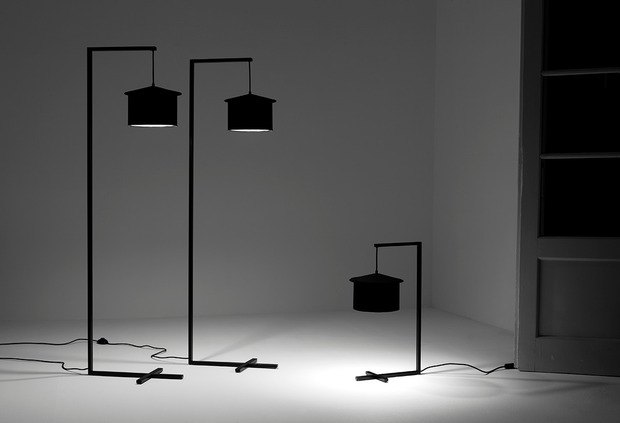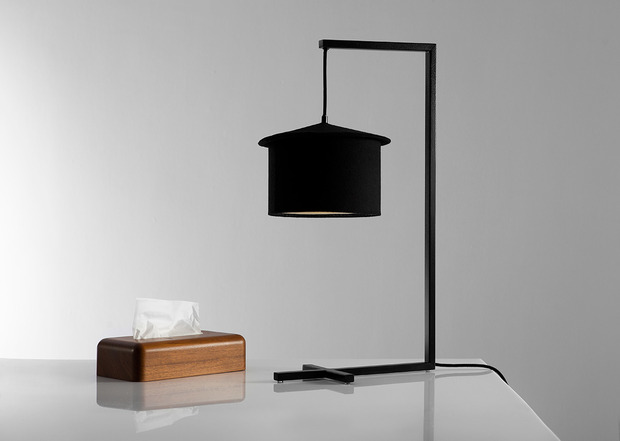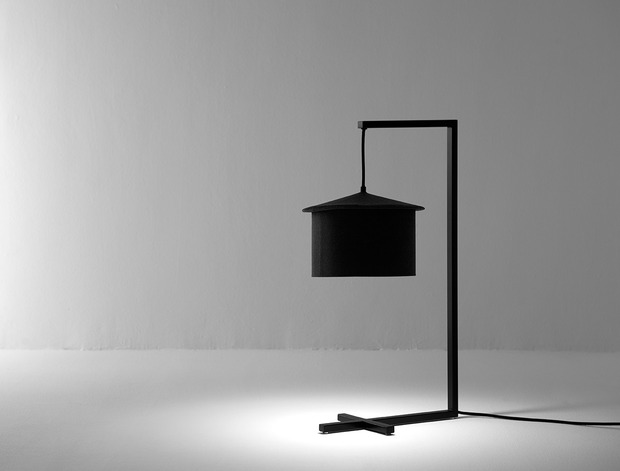Vanity Faith: Preachin’ Ain’t Easy
Design collective Greece Is For Lovers turns sacred symbols into satirical furnishings

by Ikechukwu Onyewuenyi

The move to marry modernity with sacred symbols is gaining momentum in both religious and design circles. This dmarche has been a welcomed challenge for design collective Greece Is For Lovers (GIFL), as it calls for interpreting how religious manifestations can exist within popular culture without outright subversion. This conflict between subject matter and context is a prevalent theme in GIFL’s past works, and continues withtheir latest project, “Vanity Faith: Preachin’ Ain’t Easy.” GIFL straddles the line between sacrilege and satire by tastefully juxtaposing the excessive visual language of the Orthodox clergy against an accessible, domestic context in an effort to comment on the affected ways of the Orthodox church.

Orthodoxy is turned on its headquite literallyinVanity Faithas the Kalimavkion (orthodox priests’ hats) are recreated as slightly oversized lampshades for table and floor lamps. The handmade Kalimavkion lampshades are constructed in felt, satin and leathermuch like the garb worn by the Orthodox clergymen. The symbolic effect of shedding light through such a fixture is humanizing; a sanctifying grace that softens the lordly divide that tends to exist between the church and the domestic space. This is made even more apparent with the ironic and morbid take on a disposable tissue-box that is crafted out of iroko wood and then hand-waxed. An outlet for our tears and pain, the tissue box conflates exuberance of the Orthodox church with a prosaic utility present in most Greek homes.
Contemporary as the designs may seem, GIFL designer Thanos Karampatos emphasizes thatVanity Faithdoes “not propose to re-design or modernize the churchs visual language. The initial observation and starting point for creating this collection was the strong sense of visual vanity the Orthodox Church and clergy exhumesit introduces the ‘unorthodox’ into the domestic environment.” We spoke with Karampatos of GIFL about thevarious levels in which vanity operates within the collection and also to get asense on the position ofinterior design in social commentary.

What is this “unorthodox” doctrine you allude to inVanity Faith?Is it the dissonance between how the faith is taught and how it’s practiced?
The “unorthodox” doctrine refers to our attempt to introduce symbolism associated with the Orthodox Church clergy, into the domestic environment.So, while the hats sitting on priests’ heads are considered orthodox, they become unorthodox as lampshades. As with the majority of our work, the interpretation is open.Absolutely, there is dissonance between preaching and practicing.In this case, the dissonance is pretty evident as the preaching of modesty takes place dressed in luxurious attire. The hats for instance, are very somber on the outside; on the inside however, they reveal a luscious white satin lining that has sensual qualities.

This collection shifts orthodox clergy dress into a modern, domestic lighta move that has been met with criticism. What are your thoughts on putting the clergy’s visual language into a more domestic, modern sphere?
We are extremely visual and itd be impossible for us to leave such an iconic piece unnoticed. We recognize symbolism and insignia that can be introduced in unexpected areas such as domestic objects and even vanity sets with interesting results. In this case, we truly believe that the original hats are beautiful and can be used as a component for a stylish light.

How is the vanity directed at the Orthodox Church?
The appearance of the clergy is very dominant. An extremely elaborate and very expensive attire that evokes respect and hierarchy with the use of high hats, large crosses and stand-out colorsit’s worth mentioning that in the case of clerical robes, black is not the only color used. Regal purple with gold embroidery is also featured in higher ranks as well as dark red and navy blue. Jewelry becomes more elaborate and the hats may have a different color on the inside.
In other words, priesthood sports a look that’s loaded with excess, authority and symbolismwithin which we recognize the vanity element playing a very important role. We must stress, however, that we have never shied away from vanity or avoided it as an anathema. We acknowledge it as a driving creative force, in our work and even our daily lives. In this case we recognized it in the Orthodox clergys attire.
At the same time, with the tissue box and the Kalimavkion lampshades, it seems like there’s an effort to bring them into our home in order to recreate that intimate relationship synonymous with the church.
We appreciate the looks of the original hats and wish to introduce them as shades for lights for the home. In the average Greek orthodox home the religious symbols are present in the form of icons, candles, oil-lamps etc.Why not as lamps or tissue-boxes? We grew up around this aesthetic and as with most of our designs, we came across a point when we stopped taking our surroundings for granted and tried to look at it under a different perspective. This is such a practice.

How does the layman that exists in the popular culture tie into the vanity? For the religious man, there’s a constant struggle with upholding the tenets of faith amidst a backdrop of popular culture. Are the pieces also a commentary on how individuals may present a vain view of their faith to the public?
Popular culture is a form of religion in itself; converting masses and using trademarks as insignia. There is faith and religious-like devotion to everything: style, fashion, design, and consumerism. On the other hand, the church operates as a franchised corporation, utilizing point-of-sale locations, recognizable logo-like insignia and uniforms. In both cases, the visual element is extremely powerful and dominating.
We have also noticed a strong resemblance between the visual language of the orthodox clergy and modern sub-cultural icons. A very characteristic example of this are the rappers and hip-hop stars. Symbols, jewellery and even hand gestures are common within the two seemingly different, yet very visually similar cases.
Images courtesy of Greece Is For Lovers









